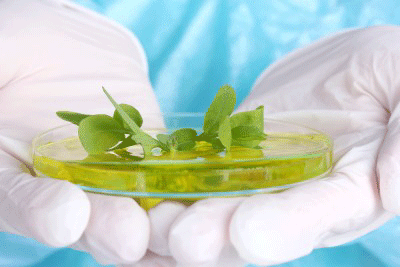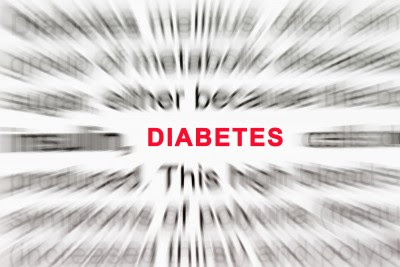Monsanto-Funded Science Denies Emerging Roundup-Cancer Link About Information Biography
Source(google.com.pk)
 |
Monsanto-Funded Science Denies Emerging Roundup-Cancer Link
|
Monsanto-funded research has been
proliferating as uncontrollably as their genetically modified (GM) plants, and the bugs increasingly resistant to them.
Two studies have appeared in scientific journals in the past eight months, both funded by Monsanto, and both discrediting a
Roundup herbicide-cancer link
.[i][ii]
The context within which these new studies are appearing is the
growing body of experimental research indicating that the active ingredient in Roundup,
glyphosate, along with the surfactants and related "inactive" ingredients found within glyphosate-based formulations, cause
genetic damage associated with cancer initiation, and at levels far below those used agricultural applications and associated with real-world exposures.
[iii] [iv] [v] [vi] [vii]
This has put manufacturers and proponents of glyphosate, as well as "Roundup Ready" GM plants in a vulnerable position. If, the precautionary principle is employed and a much-needed reclassification of glyphosate as a class III carcinogen to a class II or I occurs, the increasingly global dominance of GM-based food crop systems will come to a screeching, regulation-induced halt.
So, given the threat posed by non-industry funded research on glyphosate’s toxicity, Monsanto has been putting money into research and development -- but not in the reputable sense of the phrase -- by
paying for research to develop the storyline that, despite damning research to contrary, Roundup is still safe.
The newest study, published in the journal Regulatory Toxicology and Pharmacology titled,
"Epidemiologic studies on glyphosate and cancer: A review," declared its glaring conflict of interest in the following manner:
Conflict of Interest Statement
The authors have disclosed the funding source for this research. JSM [study author] has served has a paid consultant to Monsanto Company. Final decisions regarding the content of the manuscript were made solely by the four authors.
Acknowledgment
This research was supported by the Monsanto Company, St. Louis, Missouri
Even if no such conflict was explicitly declared, industry-funded research is almost exclusively positive, minimizing or denying harms to exposed populations associated with the products they are evaluating.
A salient example is the recent summary of 176 studies by Baker
[viii] which found that published research looking into the impact of
Bisphenol A on human health resulted in exclusively pro-industry findings:
| Funding | Harm | No Harm |
| Industry | 0 | 13 (100%) |
| Independent (e.g. government) | 152 (86%) | 11 (14%) |
Adding to the problem, the editorial boards of some of the journals within which the questionable science is printed are populated by paid consultants of the very industries they publish ostensibly impartial research on.
For example, the editor of the journal Regulatory Toxicology and Pharmacology within which latest Monsanto-funded glyphosate-cancer review was published,
Gio Batta Gori, is notorious for being a tobacco industry consultant and for publishing junk science in his journal, which has been called: "A
Scientific Journal with Industrial Bias as Its Specialty."
His journal published research in 2003, provided by the same company,
Exponent, which employs three of the researchers who authored the latest
glyphosate-cancer study, as well as one author on the 2011 glyphosate-cancer study, on the purported
non-carcinogenicity of dioxin, a highly toxic ingredient in Agent Orange.
Given these obvious conflicts of interest, from the bottom up and the top down, the time has come for people to enact reform with their dollars and their forks, and when worthwhile ballot initiative emerge, their votes.
#1: Stop buying anything not explicitly labeled non-GMO or certified organic, which amounts to the same assurance.
#2: Grow it yourself, or support local organic growers.
#3:
Support the California Ballot Initiative to label GMOs.
[i] Developmental and reproductive outcomes in humans and animals after glyphosate exposure: a critical analysis. J Toxicol Environ Health B Crit Rev. 2012 ;15(1):39-96.
[ii] Epidemiologic studies of glyphosate and non-cancer health outcomes: a review. Regul Toxicol Pharmacol. 2011 Nov ;61(2):172-84. Epub 2011 Jul 21.
[iii] Marc, J., Mulner-Lorillon, O., Boulben, S., Hureau, D., Durand, G., and Belle, R. 2002. Pesticide Roundup provokes cell division dysfunction at the level of CDK1/cyclin
B activation. Chem. Res. Toxicol. 15: 326–31.
[iv] Marc, J., Mulner-Lorillon, O., Durand, G., and Belle, R. 2003. Embryonic cell cycle for risk
assessment of pesticides at the molecular level. Environnemental. Chemistry. letters. 1: 8–12.
[v] Marc, J., Belle, R., Morales, J., Cormier, P., and Mulner-Lorillon, O. 2004a. Formulated
glyphosate activates the DNA-response checkpoint of the cell cycle leading to the
prevention of G2/M transition. Toxicol. Sci. 82: 436–42
[vi] Marc, J., Mulner-Lorillon, O., and Belle, R. 2004b. Glyphosate-based pesticides affect
cell cycle regulation. Biol. Cell. 96: 245–49.
[vii] Marc, J., Le Breton, M., Cormier, P., Morales, J., Belle, R., and Mulner-Lorillon, O. 2005.
A glyphosate-based pesticide impinges on transcription. Toxicol. Appl. Pharmacol.
203:1–8.
[viii] Baker, Nena (2008).
The Body Toxic. North Point Press. p. 142. [cited from Lessig 2011, p. 25 Lay summary].

.gif)



